11 months
ago -
PDXRyagi
-
Direct link
Hello everybody! Welcome to today’s Developer Diary!
My name is Stefan and this is my first time presenting a Dev Diary, so let me do a small introduction.
I am acting as the 3D Art Coordinator at Tinto and my main responsibility is to coordinate all the efforts of the Tinto 3D art team and make sure we create a cohesive and consistent artist look.
Now, let's proceed and allow me to present some artwork for Winds of Change DLC. Afterward, Dargeths will present the new achievements for the 1.37 update.
-------------
Loading Screen As usual, the first piece of art is the loading screen. Since the Incas are one of the pillars for the Winds of Change DLC and the free update, we’ve decided to introduce a new leader for the Pre-Columbian Civilizations, marking the first since El Dorado in 2015, which featured Moctezuma II in Tenochtitlan. Our choice was Pachacuti Inca Yupanqui, also called Pachacútec (1438–1471), because of his importance as the founder of the Incan Empire.
Pachacútec was the ninth Sapa Inca of the Kingdom of Cusco, one of the most important cities in the Incan Empire. He successfully brought together the territories spanning from Quito to present-day Chile, forming the Incan Empire. Among his notable achievements was the creation of the world-famous Machu Picchu. Therefore, we decided to portray him in front of this town at its peak, full of gardens and llamas. Fun fact, in Quechua, Pachakutiy means 'the turn of the world'.
So we can probably say that he is the perfect candidate for Winds of Change since this DLC is about changing, and updates focusing on almost half of the world!
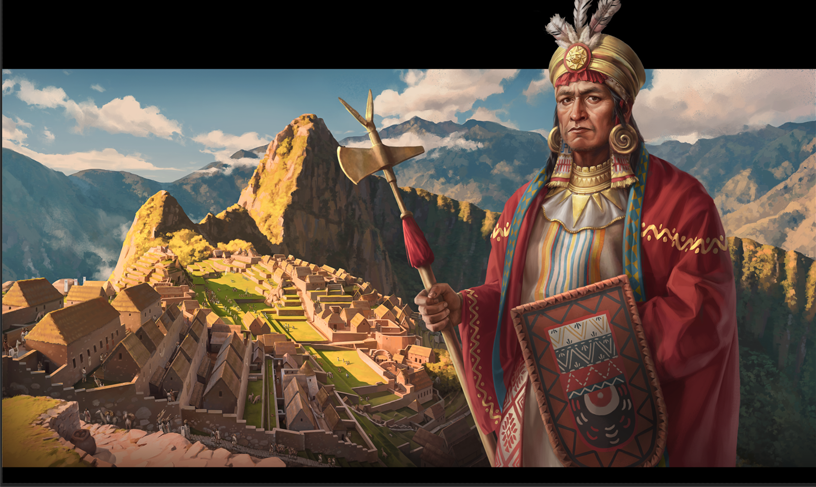
(A higher resolution image can be found over on our forums[forum.paradoxplaza.com])
-------------
UI Art
Our 2D artists have spent the last few months creating new illustrations and icons. More than 300 new art assets have been added to the DLC, including more than 100 new mission icons, 25 new government reforms, and 5 new government mechanics to cover all the content created for Winds of Change and the 1.37 update. Here are some of our favorite examples:

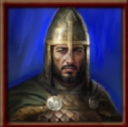
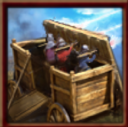
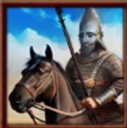
-------------
Unit Models
Moving on to 3D models, with Winds of Change we have included 32 new unit models.
Our criteria for choosing the specific countries was to focus on areas lacking distinctive representations, presenting a considerable challenge as we've already explored most of the globe in previous DLCs. So let’s see who’s ending up with the newest fanciest uniforms and cool hats.
Romagnol Culture
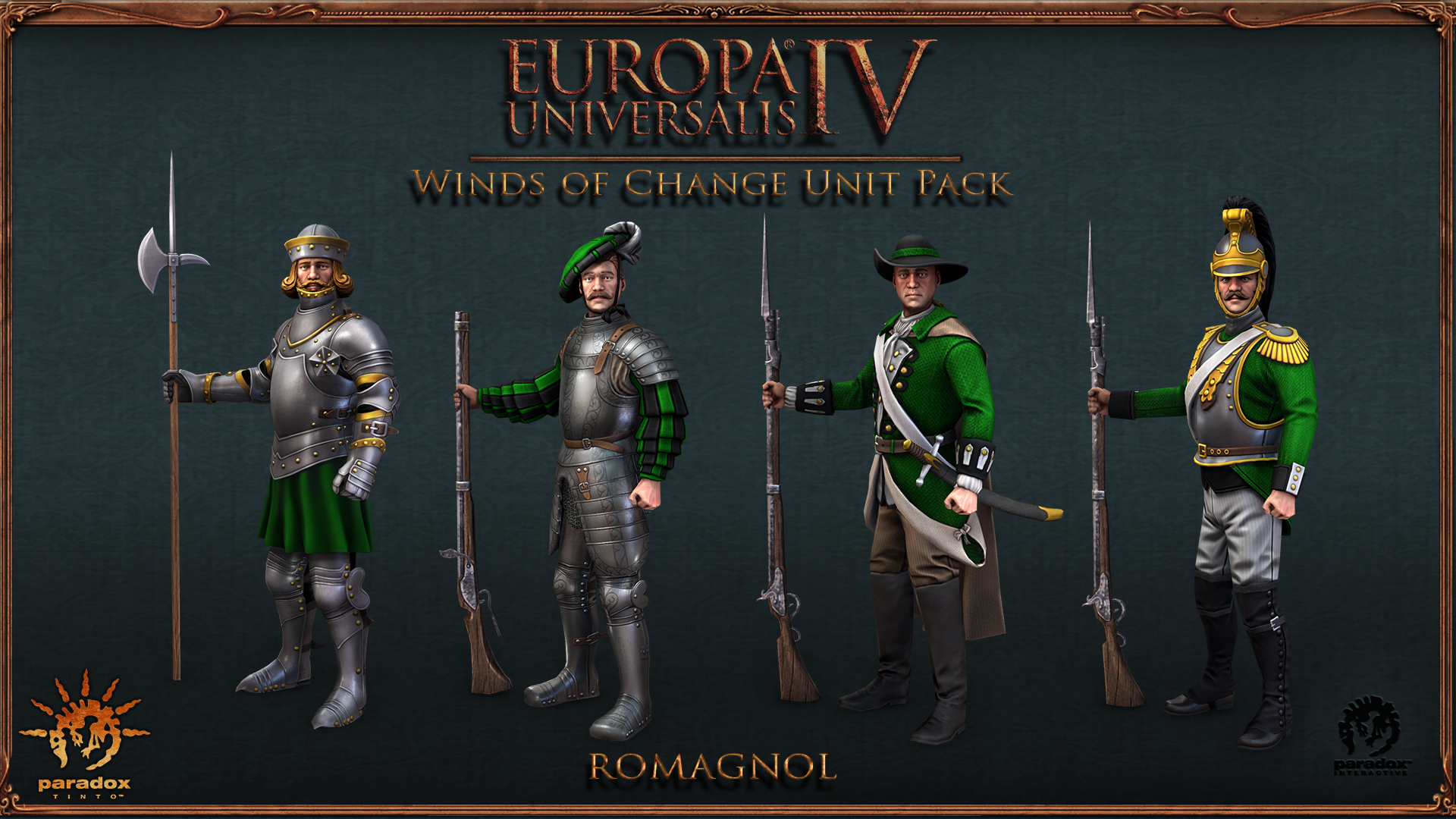
Romagnoli is one of the most important cultures in what is modern Italy today, while in the past the Duchy of Ferrara was involved in the infighting with their neighboring states in the region. One of our main inspirations was the Gala armor of the Italian General Alessandro Farnese, Duke of the Parma and Piacenza, which is very clear in the design of the early age armor set, and the heavy armor is also visible on the second unit, before going into a more modern and light uniform for the later ages, with more focus on agility and utility.
Umbrian Culture

The Umbrian countries (Urbino, Spoleto, and Perugia) fell under the control of the Papal States in the Middle Ages. They used a great variety of armor pieces, but in general, they wore padded clothing, chainmail, breastplates, and helmets. We see that especially between the 15th and 17th centuries, one of our inspirations for them was the Infantry of House Frederico da Montefeltro. For the later ages, the uniforms were also more based on mobility and utility, with the use of belts and pouches for ammunition and occasionally swords or bayonets as well.
Rhenish Culture
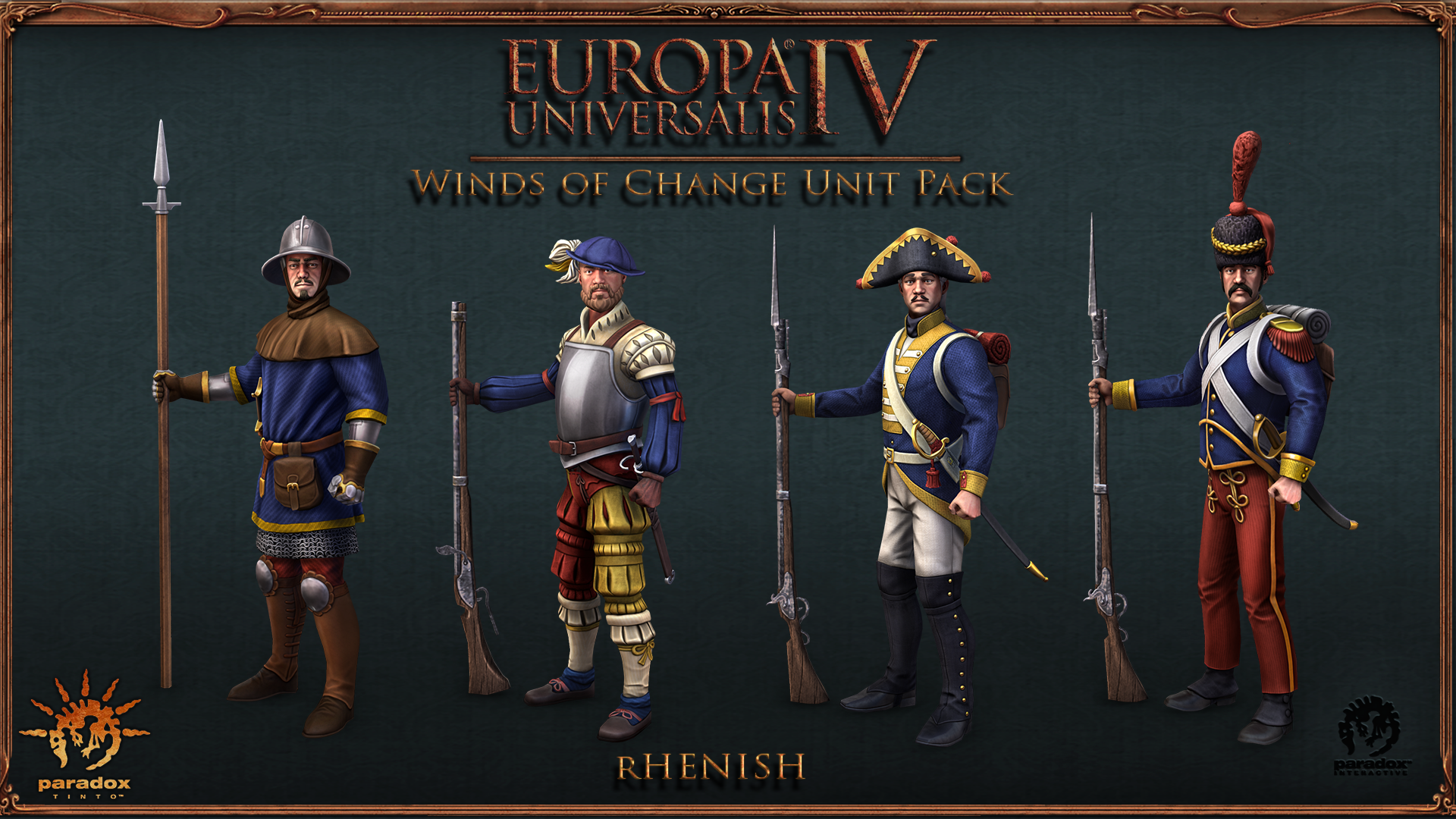
The Rhenish units came from one of the most important regions in Germany during the period, and had great recognition for their military force and discipline, playing an important role in European military history during the 16th and 17th centuries. For the units in the earlier ages, we got inspiration from the typical Rhenish Palatinate Landsknecht outfit, with its intricate designs and very unique use of colors and style. For the later ages, the main inspiration was the Regiment Von Nassau and also the 2nd battalion of the 6th Infantry of the Confederation of the Rhine.
Westphalian Culture

The Westphalian units (like Munster, Dortmund, or Oldenburg) had a very significant military history in Europe during the 16th and 17th centuries. For our early-age units, our main inspiration was the Maximilian armor, a typical 16th-century German plate armor made in steel and decorated in a very specific way that helped to deflect blades during melee combat.
Dalmatia Culture
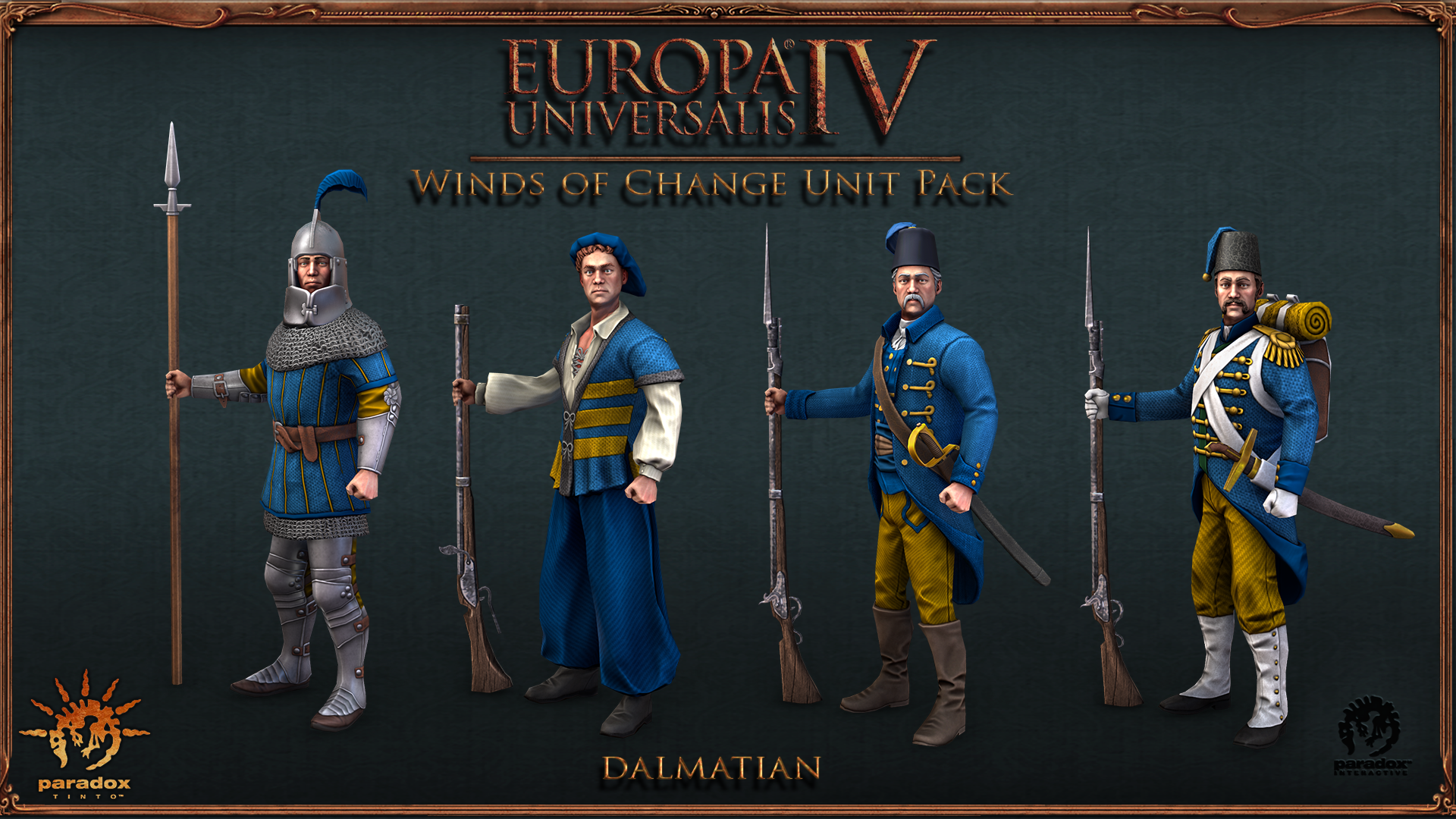
Most of Dalmatia, in the eastern coast of the Adriatic sea, was part of the Venetian Republic for most of the period, their inhabitants having served in the armies, while the most relevant independent state in 1444 was the Republic of Ragusa. The Dalmatians' impact and expertise in maritime warfare are clearly apparent in the design of the units, crafted to maintain the essence of a military force seamlessly integrated with a naval fleet.
Croatian Culture
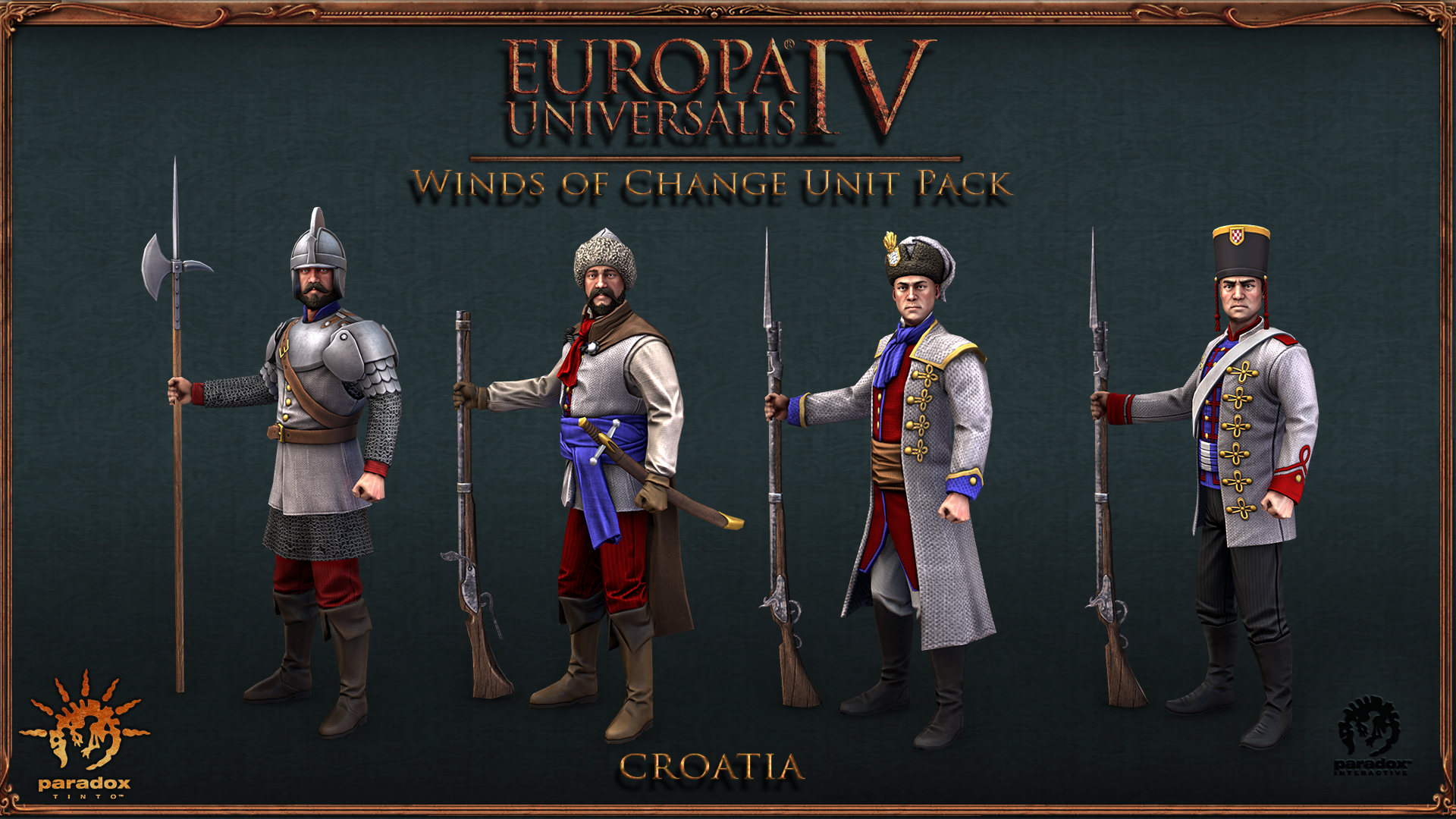
As Croatia was part of the Habsburg Monarchy during most of the period, they were quite important for the military forces of the Habsburg and were involved in many conflicts and campaigns across Europe, including the Thirty Years War. One notable feature of the units is the influence of this Croatian military style, showcased in one of the outfit designs featuring their distinctive cravat. This design also served as inspiration for the formation of the Cravat Regiment in contemporary Croatia. Additionally, countries with Slovenian culture will use these Croation unit models as well.
Moldavia
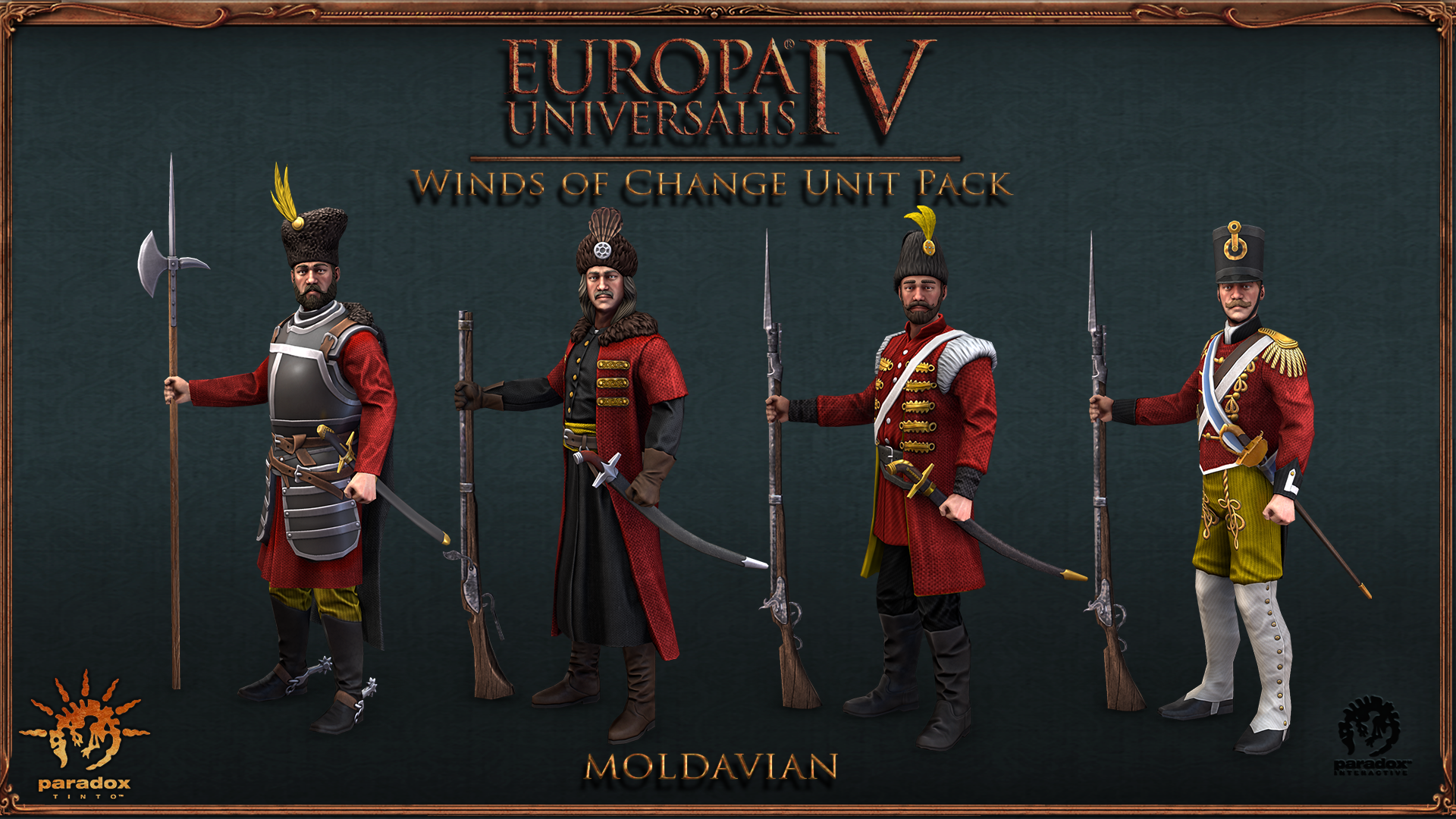
Moldavia starts in EUIV as an independent principality, but soon after fell under the control of Lithuania, then passed into the hands of the Ottomans for about 200 years, and finally was annexed by Russia at the end of the 18th century, which would make their units to be part of different army forces of the Eastern European region. Nevertheless, they managed to maintain some independence during all these years. We have tried to portray their culture while showing some influence of their rulers. For the late-age uniform we decided to use a tall shako with leather details, decorative lace on the pants and utility belt, and sashes for the sword and sharp-looking jacket.
Slovakian Culture

The Slovakian units are based upon the region of Nitra, situated in present-day Slovakia, a region mostly that was controlled first by Hungary, and then by the Habsburg monarchy. Our design inspiration drew heavily from early Habsburg military attire. We decided for a more distinctive approach by crafting lighter variations of these uniforms, avoiding bulky breastplates and armor in favor of a more agile appearance.
-------------
Portraits for Woman Advisors in North America
As we mentioned last week, we have decided to include the last possible combinations of advisors that were missing, to cover all the different graphical cultures (such as European, African, Muslim, and East Asian cultures). This means that with the upcoming Update 1.37, you will be able to enjoy a total of 21 new portraits for women advisors in North America. These portraits will cover all the possible combinations for administrative, diplomatic, and military advisors. Let's take a look at all of them!
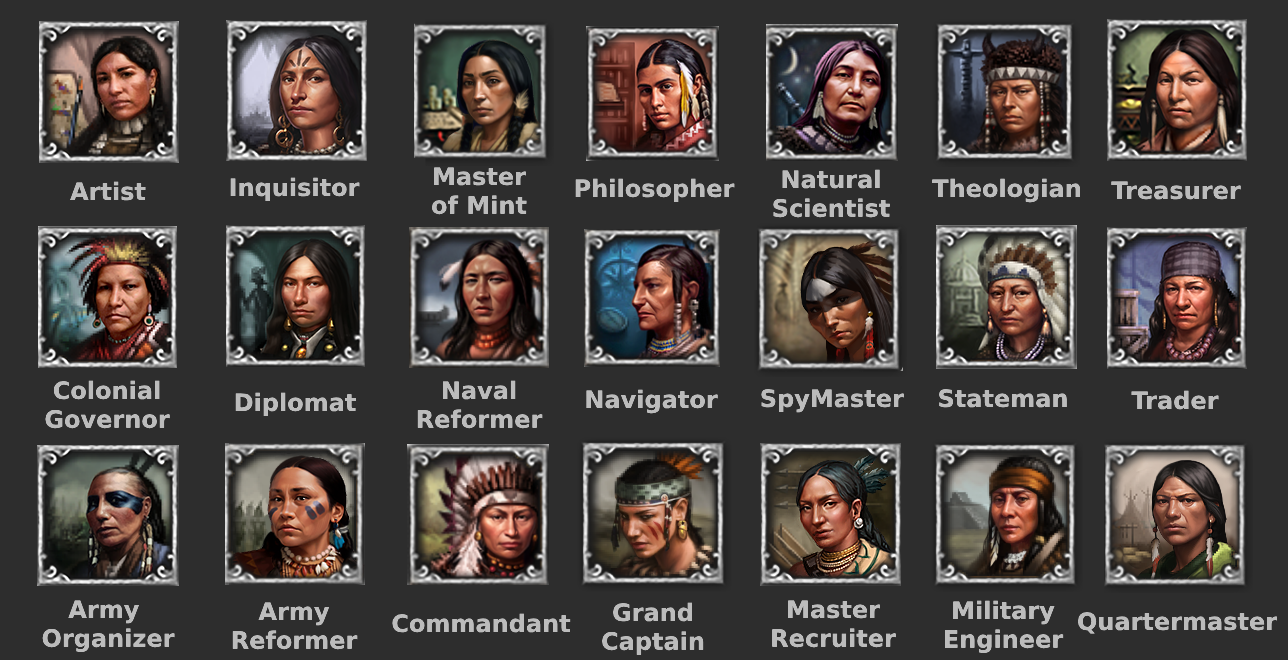
-------------
Winds of Change Art
We are extremely happy about the great reception that the key art for Winds of Change has received. We would like to take this opportunity to give you some context as to who the different characters starring in this art piece are. The idea behind this illustration is to portray these three different rulers facing the dawn of a new age. Let’s start with the closest ruler; the last Incan, Atahualpa. The second is Babur, founder of the Mughal Empire and descendant of Timur and Genghis Khan. And the last one is William of Orange, also known as the Silent, who was the leader of the Dutch Revolt against the Spanish Habsburgs.
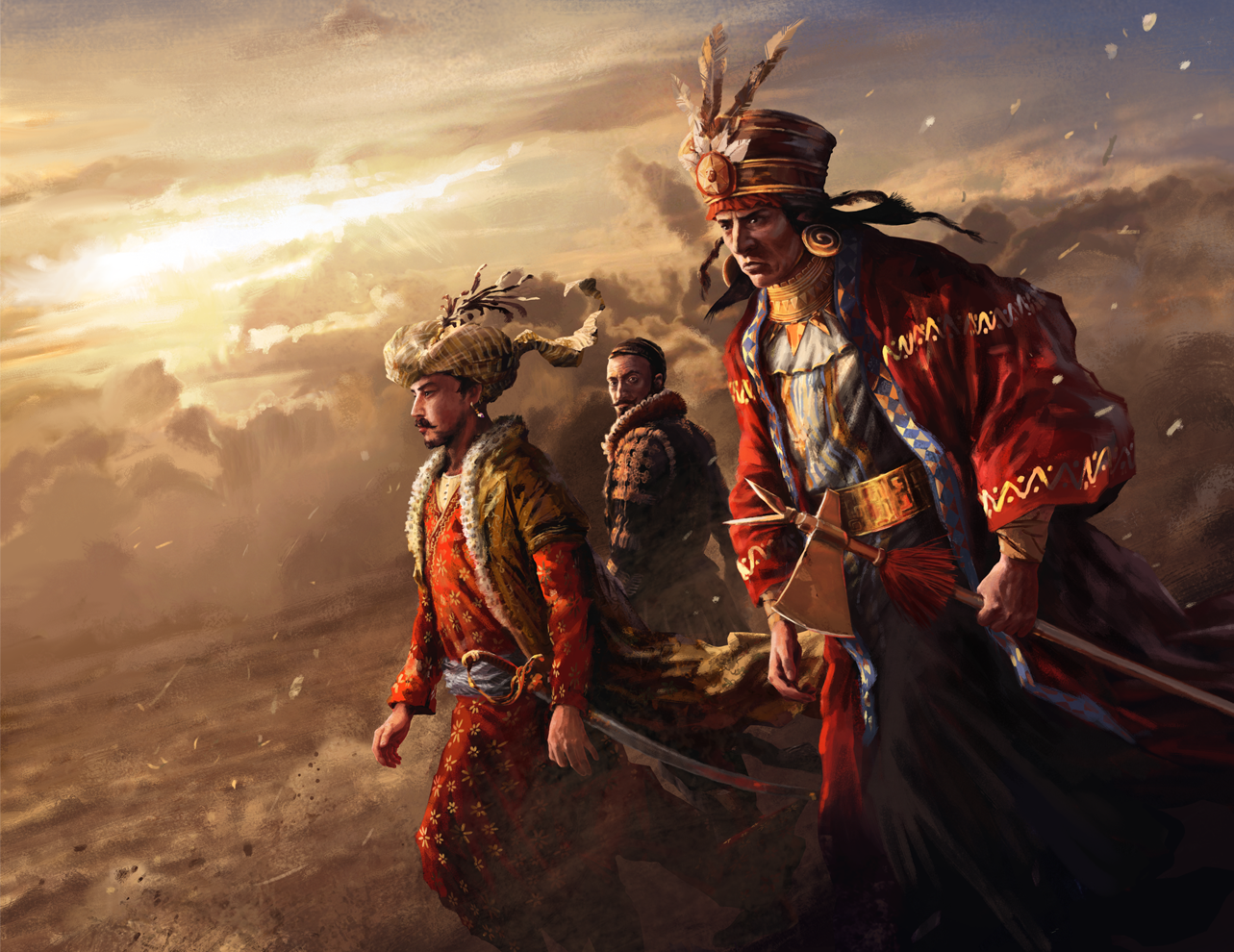
(As with the loading screen art, you can find a higher resolution over on our forums[forum.paradoxplaza.com])
-------------
Achievements
Let’s move to the next section since [USER=1611326]@Dargeths[/user] is going to talk about Achievements implemented in 1.37.
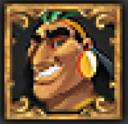
It's all coming together
Complete the Incan mission tree (Sunset invasion missions excluded).
A path of conquest for the Inca is waiting for you, it only requires adoring the Inti Gods, embracing the Andean traditions, and pulling the right lever.
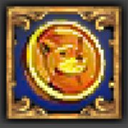
Doge Coins
Starting as Venice, become the Economic Hegemon.
A rich doge is a happy doge, especially when he has an enormous fortune thanks to his crazy investments that can reach to the moon.

Veritas Vincit Starting as Bohemia, make Hussite the official faith of the Empire and become the Emperor.
With the Emperor dethroned it is time to redecorate a bit. The Goose seems superior to an eagle anyway!
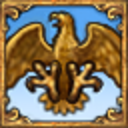
The eagle flies alone Starting as Hisn Kayfa, reach a forcelimit of 500k
We know that Hisn Kayfa already had one achievement but is not enough to calm the ambitions of the Saladin Eagle. Now you have a second excuse to do the new playthrough of Hisn Kayfa into Ayyubids.
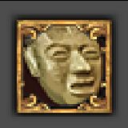
Mayapahit?
Starting as any Mayan country, form Maya and own or have a subject own the island of Java.
What happened? You seem confused. Majapahit? What is that? It has always been Mayan land.

There Khan only be one!
Starting as a Steppe Horde, ensure there exists no other horde on the world.
The steppes are a land of greedy and ruthless people. Here alliances and brotherhoods are created as quickly as they are destroyed. Only a warrior can survive unifying the Hordes under a single rule.
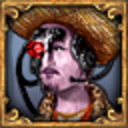
Baborg
As the Mughals, assimilate at least 12 culture groups.
Babur was famous for forming the Mughal Empire and conquering most parts of India. But the Babur's ultimate goal is ’achieving perfection’ and assimilating the rest of the world.
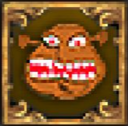
Get out of my swamp!
As the Netherlands, own all of the Low Countries and have 50% or more Fort Defense.
Sooomebody once told me, the world is gonna roll me… And even more so if you decide to go into the Dutch swamp.
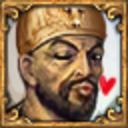
Timurizz Starting as the Timurids, have 75 prestige and 5 allies with 100 trust and 150 opinion
The lame was a benevolent ruler who decided to spread love and freedom to Central Asia, or that is what I remember from school.
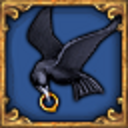
The Hungarian Games Starting as Hungary, win 23 battles with the Black Army against at least 12 different countries.
The Hungarian Games are close to starting, but this year the Black Army has all the numbers to achieve the victory over the rest of the tributes.
A last note. Since Winds of Change and the 1.37 ‘Inca’ update is are mainly focused on giving flavor to different regions and countries, we have adjusted different old achievements related to the new content added from previous patches to make sure that all of them are possible to complete with the new set-up for Europa Universalis IV.
-------------
This concludes this week's Dev Diary and also the second to last Dev Diary before the release of Winds of Change. Next week, Dargeths will talk about the Patch Notes for the 1.37 Inca Update.
My name is Stefan and this is my first time presenting a Dev Diary, so let me do a small introduction.
I am acting as the 3D Art Coordinator at Tinto and my main responsibility is to coordinate all the efforts of the Tinto 3D art team and make sure we create a cohesive and consistent artist look.
Now, let's proceed and allow me to present some artwork for Winds of Change DLC. Afterward, Dargeths will present the new achievements for the 1.37 update.
-------------
Loading Screen As usual, the first piece of art is the loading screen. Since the Incas are one of the pillars for the Winds of Change DLC and the free update, we’ve decided to introduce a new leader for the Pre-Columbian Civilizations, marking the first since El Dorado in 2015, which featured Moctezuma II in Tenochtitlan. Our choice was Pachacuti Inca Yupanqui, also called Pachacútec (1438–1471), because of his importance as the founder of the Incan Empire.
Pachacútec was the ninth Sapa Inca of the Kingdom of Cusco, one of the most important cities in the Incan Empire. He successfully brought together the territories spanning from Quito to present-day Chile, forming the Incan Empire. Among his notable achievements was the creation of the world-famous Machu Picchu. Therefore, we decided to portray him in front of this town at its peak, full of gardens and llamas. Fun fact, in Quechua, Pachakutiy means 'the turn of the world'.
So we can probably say that he is the perfect candidate for Winds of Change since this DLC is about changing, and updates focusing on almost half of the world!

(A higher resolution image can be found over on our forums[forum.paradoxplaza.com])
-------------
UI Art
Our 2D artists have spent the last few months creating new illustrations and icons. More than 300 new art assets have been added to the DLC, including more than 100 new mission icons, 25 new government reforms, and 5 new government mechanics to cover all the content created for Winds of Change and the 1.37 update. Here are some of our favorite examples:




-------------
Unit Models
Moving on to 3D models, with Winds of Change we have included 32 new unit models.
Our criteria for choosing the specific countries was to focus on areas lacking distinctive representations, presenting a considerable challenge as we've already explored most of the globe in previous DLCs. So let’s see who’s ending up with the newest fanciest uniforms and cool hats.
Romagnol Culture

Romagnoli is one of the most important cultures in what is modern Italy today, while in the past the Duchy of Ferrara was involved in the infighting with their neighboring states in the region. One of our main inspirations was the Gala armor of the Italian General Alessandro Farnese, Duke of the Parma and Piacenza, which is very clear in the design of the early age armor set, and the heavy armor is also visible on the second unit, before going into a more modern and light uniform for the later ages, with more focus on agility and utility.
Umbrian Culture

The Umbrian countries (Urbino, Spoleto, and Perugia) fell under the control of the Papal States in the Middle Ages. They used a great variety of armor pieces, but in general, they wore padded clothing, chainmail, breastplates, and helmets. We see that especially between the 15th and 17th centuries, one of our inspirations for them was the Infantry of House Frederico da Montefeltro. For the later ages, the uniforms were also more based on mobility and utility, with the use of belts and pouches for ammunition and occasionally swords or bayonets as well.
Rhenish Culture

The Rhenish units came from one of the most important regions in Germany during the period, and had great recognition for their military force and discipline, playing an important role in European military history during the 16th and 17th centuries. For the units in the earlier ages, we got inspiration from the typical Rhenish Palatinate Landsknecht outfit, with its intricate designs and very unique use of colors and style. For the later ages, the main inspiration was the Regiment Von Nassau and also the 2nd battalion of the 6th Infantry of the Confederation of the Rhine.
Westphalian Culture

The Westphalian units (like Munster, Dortmund, or Oldenburg) had a very significant military history in Europe during the 16th and 17th centuries. For our early-age units, our main inspiration was the Maximilian armor, a typical 16th-century German plate armor made in steel and decorated in a very specific way that helped to deflect blades during melee combat.
Dalmatia Culture

Most of Dalmatia, in the eastern coast of the Adriatic sea, was part of the Venetian Republic for most of the period, their inhabitants having served in the armies, while the most relevant independent state in 1444 was the Republic of Ragusa. The Dalmatians' impact and expertise in maritime warfare are clearly apparent in the design of the units, crafted to maintain the essence of a military force seamlessly integrated with a naval fleet.
Croatian Culture

As Croatia was part of the Habsburg Monarchy during most of the period, they were quite important for the military forces of the Habsburg and were involved in many conflicts and campaigns across Europe, including the Thirty Years War. One notable feature of the units is the influence of this Croatian military style, showcased in one of the outfit designs featuring their distinctive cravat. This design also served as inspiration for the formation of the Cravat Regiment in contemporary Croatia. Additionally, countries with Slovenian culture will use these Croation unit models as well.
Moldavia

Moldavia starts in EUIV as an independent principality, but soon after fell under the control of Lithuania, then passed into the hands of the Ottomans for about 200 years, and finally was annexed by Russia at the end of the 18th century, which would make their units to be part of different army forces of the Eastern European region. Nevertheless, they managed to maintain some independence during all these years. We have tried to portray their culture while showing some influence of their rulers. For the late-age uniform we decided to use a tall shako with leather details, decorative lace on the pants and utility belt, and sashes for the sword and sharp-looking jacket.
Slovakian Culture

The Slovakian units are based upon the region of Nitra, situated in present-day Slovakia, a region mostly that was controlled first by Hungary, and then by the Habsburg monarchy. Our design inspiration drew heavily from early Habsburg military attire. We decided for a more distinctive approach by crafting lighter variations of these uniforms, avoiding bulky breastplates and armor in favor of a more agile appearance.
-------------
Portraits for Woman Advisors in North America
As we mentioned last week, we have decided to include the last possible combinations of advisors that were missing, to cover all the different graphical cultures (such as European, African, Muslim, and East Asian cultures). This means that with the upcoming Update 1.37, you will be able to enjoy a total of 21 new portraits for women advisors in North America. These portraits will cover all the possible combinations for administrative, diplomatic, and military advisors. Let's take a look at all of them!

-------------
Winds of Change Art
We are extremely happy about the great reception that the key art for Winds of Change has received. We would like to take this opportunity to give you some context as to who the different characters starring in this art piece are. The idea behind this illustration is to portray these three different rulers facing the dawn of a new age. Let’s start with the closest ruler; the last Incan, Atahualpa. The second is Babur, founder of the Mughal Empire and descendant of Timur and Genghis Khan. And the last one is William of Orange, also known as the Silent, who was the leader of the Dutch Revolt against the Spanish Habsburgs.

(As with the loading screen art, you can find a higher resolution over on our forums[forum.paradoxplaza.com])
-------------
Achievements
Let’s move to the next section since [USER=1611326]@Dargeths[/user] is going to talk about Achievements implemented in 1.37.

It's all coming together
Complete the Incan mission tree (Sunset invasion missions excluded).
A path of conquest for the Inca is waiting for you, it only requires adoring the Inti Gods, embracing the Andean traditions, and pulling the right lever.

Doge Coins
Starting as Venice, become the Economic Hegemon.
A rich doge is a happy doge, especially when he has an enormous fortune thanks to his crazy investments that can reach to the moon.

Veritas Vincit Starting as Bohemia, make Hussite the official faith of the Empire and become the Emperor.
With the Emperor dethroned it is time to redecorate a bit. The Goose seems superior to an eagle anyway!

The eagle flies alone Starting as Hisn Kayfa, reach a forcelimit of 500k
We know that Hisn Kayfa already had one achievement but is not enough to calm the ambitions of the Saladin Eagle. Now you have a second excuse to do the new playthrough of Hisn Kayfa into Ayyubids.

Mayapahit?
Starting as any Mayan country, form Maya and own or have a subject own the island of Java.
What happened? You seem confused. Majapahit? What is that? It has always been Mayan land.

There Khan only be one!
Starting as a Steppe Horde, ensure there exists no other horde on the world.
The steppes are a land of greedy and ruthless people. Here alliances and brotherhoods are created as quickly as they are destroyed. Only a warrior can survive unifying the Hordes under a single rule.

Baborg
As the Mughals, assimilate at least 12 culture groups.
Babur was famous for forming the Mughal Empire and conquering most parts of India. But the Babur's ultimate goal is ’achieving perfection’ and assimilating the rest of the world.

Get out of my swamp!
As the Netherlands, own all of the Low Countries and have 50% or more Fort Defense.
Sooomebody once told me, the world is gonna roll me… And even more so if you decide to go into the Dutch swamp.

Timurizz Starting as the Timurids, have 75 prestige and 5 allies with 100 trust and 150 opinion
The lame was a benevolent ruler who decided to spread love and freedom to Central Asia, or that is what I remember from school.

The Hungarian Games Starting as Hungary, win 23 battles with the Black Army against at least 12 different countries.
The Hungarian Games are close to starting, but this year the Black Army has all the numbers to achieve the victory over the rest of the tributes.
A last note. Since Winds of Change and the 1.37 ‘Inca’ update is are mainly focused on giving flavor to different regions and countries, we have adjusted different old achievements related to the new content added from previous patches to make sure that all of them are possible to complete with the new set-up for Europa Universalis IV.
-------------
This concludes this week's Dev Diary and also the second to last Dev Diary before the release of Winds of Change. Next week, Dargeths will talk about the Patch Notes for the 1.37 Inca Update.